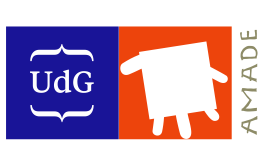
11 Mar New paper on environmental effects on the cohesive laws of the composite bonded joints
The paper entitled “Environmental effects on the cohesive laws of the composite bonded joints” has been recently published by Said Ahmed Ibrahim Abdel-Monsef from the Zagazig University and former PhD student of AMADE, together with researchers from AMADE and the Aalborg University (Denmark) as co-authors. It has been published at the scientific journal Composites Part A 155 (2022) 106798. This is an Open Access paper available at: https://doi.org/10.1016/j.compositesa.2021.106798
This paper investigates the effect of environmental conditions on the cohesive law of composite bonded joints under mode I and mode II loadings. An inverse method recently developed by the authors has been used to extract the cohesive stress-separation relation from the experimental load–displacement curve without considering a predefined shape of the cohesive law. Two types of adhesively composite bonded joints were tested at three different temperatures, −55 ◦C, room temperature and 80 ◦C and two ageing conditions (wetaged and non-aged) for four years. The shape and parameters of the cohesive law have been compared among the different ageing and test temperature conditions. The shape of the cohesive law that best fits the experimental results has been identified depending on the loading mode, test temperature and environmental conditions.
The first author, former PhD student of AMADE, would like to acknowledge the support of the Catalan Government (Agència de Gestió d’Ajuts Universitaris i de Recerca), under Grant 2017 FI_B 00100. This work has been partially funded by the Spanish Government (Ministerio de Economia 𝑦 Competitividad) under contracts RTI2018-099373-B-I00 and RTI2018-097880-B-I00.



